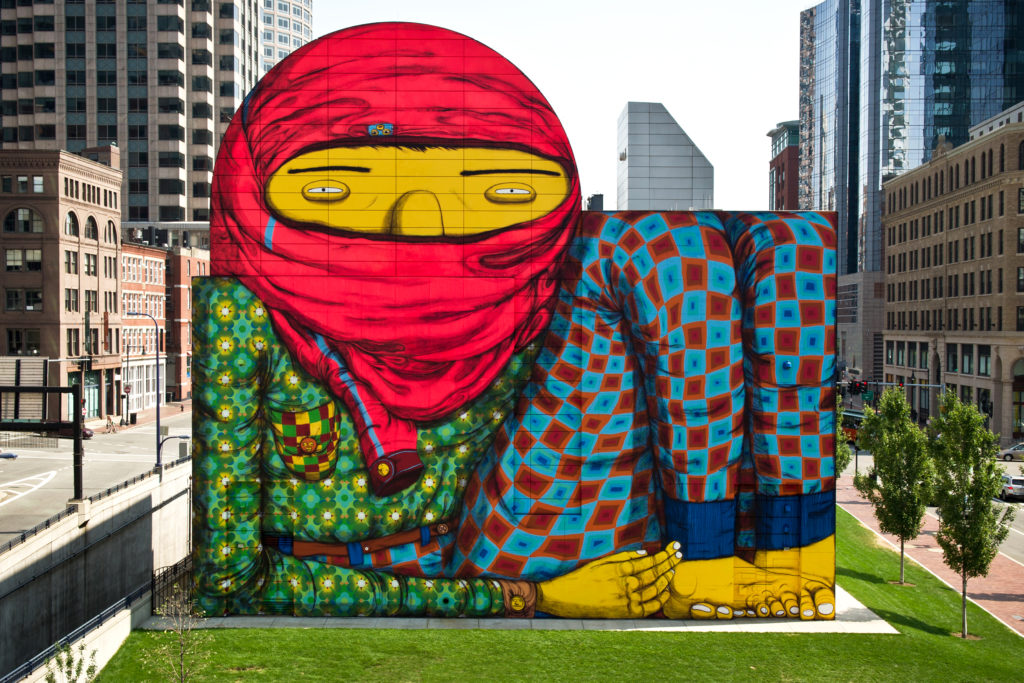
Artist Statement
Both the surrounding skyscrapers and the architecture of the Intake Structure itself influenced the subject matter of the mural: a giant, yellow-colored character in brightly mismatched clothes who appears to have squeezed himself in between the towering buildings that surround him. These yellow-colored characters are an iconic and recurrent feature in Os Gemeos’s work, and are depicted in a wide variety of situations.
Sometimes they inhabit fantastical, dream-like landscapes of joy and color; other times we see them in more everyday situations–riding the subway, sitting at home with their families or, in the case of the figure on the Greenway mural, just peering at the busy city life unfolding below. The figures are frequently shown wearing whimsical hats, colorful hoods or scarves–another hallmark feature of the artists’ work. Os Gemeos hope their mural will bring color and energy to the streets of Boston as well as inspire curiosity and imagination. Together, the Greenway mural and concurrent ICA exhibition offered a unique opportunity to fully experience the range and diversity of Os Gemeos’s artistic practice–from painting and sculptural works in the museum galleries to dynamic, large-scale murals on the city streets.
About Os Gemeos
Best known as Os Gemeos, the twins are a major force in urban art. The twins have a deep bond; they are tireless collaborators and even experience the same dreams. The twins depict their visions in surreal paintings, sculpture, and installations.
Os Gemeos draw not only from dreams but from their surroundings, incorporating these elements to forge a unique visual style. Their narrative work visually synthesizes their everyday lives: the color and chaos of Brazil, particularly that found in their neighborhood in Sao Paulo, Cambuci. Carnivals, music and folk art fascinate the twins and inspire fantastical portraits of musicians, or paintings of a procession and festivals, all of which are based on their own photographs.
To Os Gemeos labels, even reality, are not important. They do not consider themselves street artists, they “just want to paint.” Their art in public space is a means to share their work with a broad audience.



